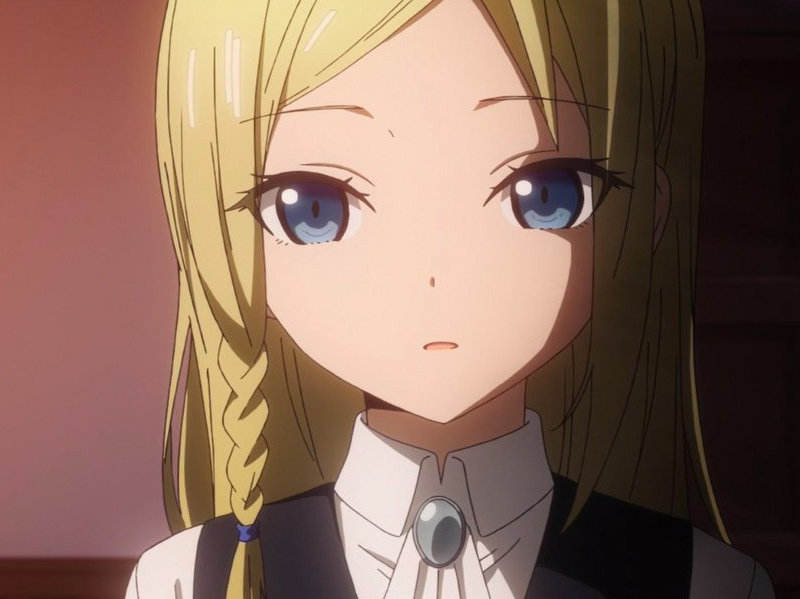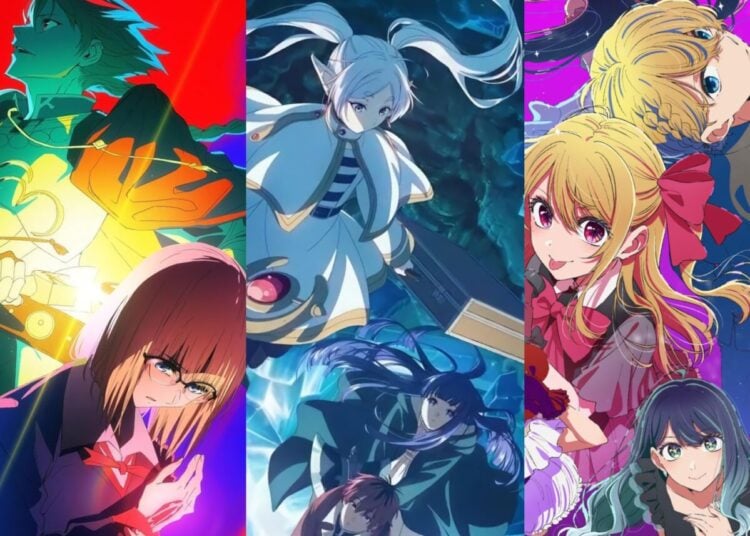It’s fun to explore the various stereotypes in anime and manga. As I’ve written recently, “foreign” characters — a category that covers actual foreigners, those of Japanese descent but born abroad, haafu mixed-race characters and “returned from abroad” Japanese — occupy a special place in anime, lightening the tone of the story often through the use of simplified stereotypes.
In a recent episode of Kaguya-sama: Love is War (which everyone should be watching), Kaguya’s assistant Hayasaka needed to pretend to be a foreigner, which she’s able to do just by wearing color contact lenses and padding her chest a little. She then spoke a hilarious kind of over-accented Japanese which was weird-sounding to the ear yet generally faithful to the way native English-speakers sound when we speak Japanese, because of the tendency to keep the intonation and stress of English sentences in place despite Japanese being a very flat language, tonally.
Some other standard stereotypes in anime we see a lot include…
- Nearly every Western character is blonde, even from countries where blonde hair is rare. Every member of a European country will kiss someone they’ve just met because of course they will.
- Every British character will be drinking tea from a fancy teacup, every minute of every day, and will speak the most formal Japanese, presumably representing Queen’s English.
- Chinese characters are always masters at kung fu, and if female, wear China dresses 24/7.
- Characters from any 南の国 minami no kuni (“a southern country”) will always be dark-skinned. This is a phrase that describes any country to the south of Japan, including Okinawa, without actually naming the country.
- Sometimes the stereotypes can be the entire reason for the anime in the first place, as with Hetalia.
It’s funny how these stereotypes in anime are generally fun and loved by everyone, but when done in live-action by Japanese actors the result is usually different. A few times, companies have made TV commercials featuring Japanese actors dressed up as foreigners, wearing wigs and huge fake noses while speaking ridiculously accented Japanese. This didn’t go down so well when me and my other American friends saw these commercials on TV back in the 90s, and it’s even more of a problem in the age of the ubiquitous Internet, which has made us more sensitive to such things.
Of course, making ethnic comedy at the expense of Japanese people used to be a cornerstone of American entertainment back in the 1960s, though we’ve thought better of it since then. While Japan today seems to have no cultural awareness of the dark days of Jerry Lewis’s Japanese performances or that episode of Gilligan’s Island where the castaways encounter a Japanese sailor who thinks WWII is still going on in 1965, sadly the film Breakfast at Tiffany’s is quite known and loved in Japan, meaning that fans are familiar with Micky Rooney’s portrayal of a Japanese man in that film. Happily, the Japanese have a special mantra they use in awkward situations like this: they just say shikata ga nai (“it can’t be helped”) and move on.
What are your favorite stereotypes in anime? Did we miss any important ones? Tell us on Twitter!
Spring is almost here, and in addition to that $10-off-$50-or-more coupon we’ve got for you (JLIST-SPRING19, which ends at the end of Monday, U.S. time), we’ve announced the new J-List Boxes are up for preorder. The new snack boxes are extra awesome, with tons of sakura-themed treats for you to sample, and lots of soon-to-be-out-of-stock chocolate products, too. Find all the J-List Box snack and “ecchi” boxes here.
















